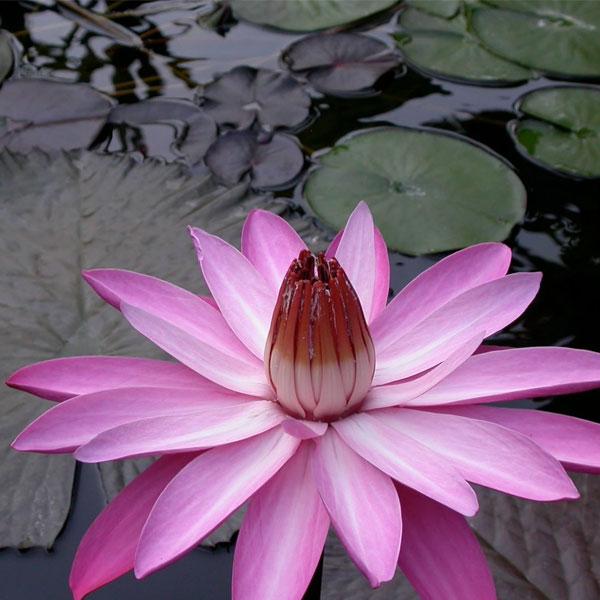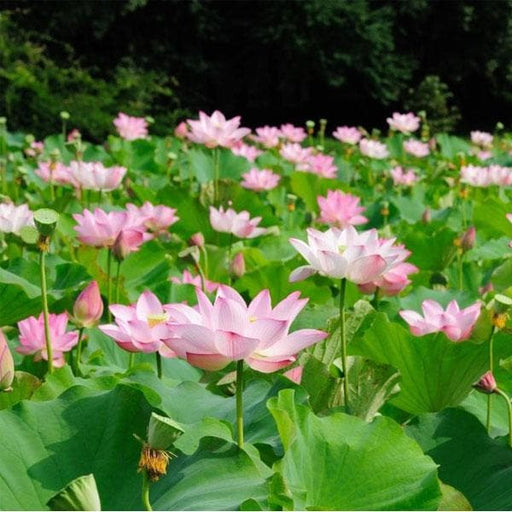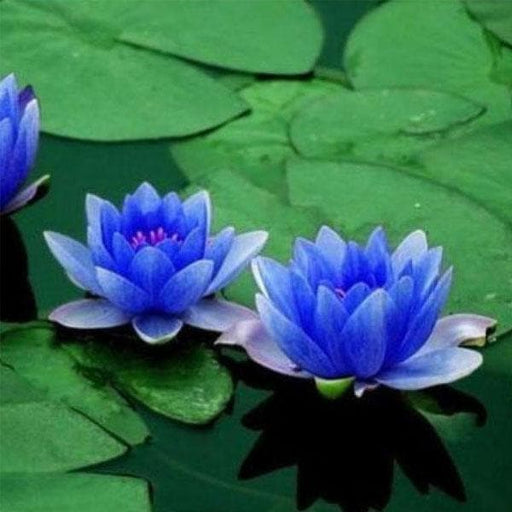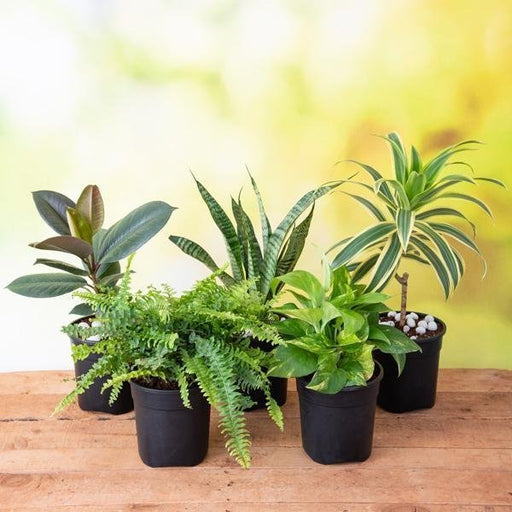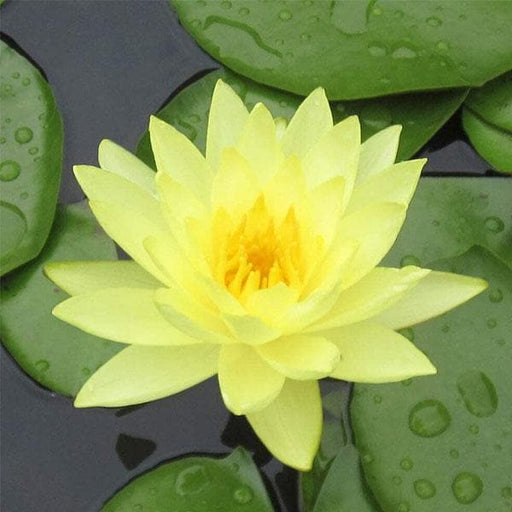Types of Aquatic Plants
Aquatic plants come in a variety of shapes, sizes, and colors. From floating plants like water lilies to fully submerged plants like hornwort, there's an aquatic plant for every type of aquatic environment. In this article, we'll explore the different types of aquatic plants and their unique characteristics.
Aquatic Plant Care
Taking care of aquatic plants can be both rewarding and challenging. They require specific water conditions, lighting, and nutrients to thrive. In this article, we'll discuss the basics of aquatic plant care, including lighting, water quality, and fertilization.
Benefits of Aquatic Plants
Aquatic plants offer a range of benefits for both the environment and aquarium enthusiasts. They oxygenate the water, provide shelter for fish and other aquatic life, and enhance the beauty of an aquarium or pond. In this article, we'll explore the many benefits of aquatic plants.
Aquatic Plants for Ponds
Ponds can be transformed into a natural oasis with the addition of aquatic plants. From water lilies to lotus plants, there are many different types of aquatic plants that can be used to create a beautiful and thriving pond ecosystem. In this article, we'll discuss the best aquatic plants for ponds.
Aquatic Plants for Aquariums
Aquariums can be enhanced by the addition of aquatic plants. They not only improve the aesthetics of the aquarium but also provide numerous benefits to fish and other aquatic life. In this article, we'll explore the best aquatic plants for aquariums and how to care for them.
Aquatic Plants for Algae Control
Aquatic plants can help control algae growth in ponds and aquariums. Certain species of aquatic plants absorb excess nutrients that contribute to algae growth, making them an effective natural solution for algae control. In this article, we'll discuss the best aquatic plants for algae control.
Aquatic Plants for Aquascaping
Aquascaping is the art of arranging aquatic plants, rocks, and other decorations in an aquarium to create a visually appealing underwater landscape. In this article, we'll explore the best aquatic plants for aquascaping and how to create a stunning underwater garden.
Aquatic Plants for Koi Ponds
Koi ponds can be transformed into a serene and natural environment with the addition of aquatic plants. Certain species of aquatic plants, such as water hyacinths and water lettuce, are particularly beneficial for koi ponds. In this article, we'll discuss the best aquatic plants for koi ponds.
Aquatic Plants for Betta Fish
Betta fish are known for their vibrant colors and active personalities. Adding aquatic plants to a betta fish tank not only enhances the aesthetics of the tank but also provides hiding spots and additional oxygen for the fish. In this article, we'll explore the best aquatic plants for betta fish tanks.
Aquatic Plants for Turtle Tanks
Turtles require a clean and healthy environment to thrive, and aquatic plants can help maintain the water quality in turtle tanks. Certain species of aquatic plants, such as java fern and water sprite, are particularly beneficial for turtle tanks. In this article, we'll discuss the best aquatic plants for turtle tanks.
Aquatic Plants for Natural Filtration
Aquatic plants can act as natural filters, absorbing excess nutrients and pollutants from the water. This makes them an effective and environmentally friendly solution for water filtration. In this article, we'll explore the best aquatic plants for natural filtration.
Aquatic Plants for Ecosystem Restoration
Aquatic plants play a crucial role in restoring damaged or degraded aquatic ecosystems. They provide habitat for aquatic animals, improve water quality, and help control erosion. In this article, we'll discuss the best aquatic plants for ecosystem restoration and how they can be used to restore degraded aquatic environments.
Aquatic Plants for Biosecurity
Aquatic plants can have a significant impact on biosecurity, particularly in aquatic environments. Certain invasive species of aquatic plants can spread rapidly and outcompete native species, causing significant ecological damage. In this article, we'll explore the importance of aquatic plant biosecurity and how to prevent the spread of invasive species.
Aquatic Plants for Water Gardens
Water gardens can be transformed into beautiful and tranquil environments with the addition of aquatic plants. From lotus flowers to water irises, there are many different types of aquatic plants that can be used to create a stunning water garden. In this article, we'll discuss the best aquatic plants for water gardens.
Aquatic Plants for Hydroponics
Hydroponics is a method of growing plants without soil, using nutrient-rich water instead. Aquatic plants are particularly well-suited to hydroponic growing systems, as they thrive in water environments. In this article, we'll explore the best aquatic plants for hydroponics and how to grow them.
Aquatic Plants for Natural Pest Control
Aquatic plants can also act as natural pest control agents in ponds and aquariums. Certain species of aquatic plants, such as mosquito fern and duckweed, can help control mosquito larvae and other pests. In this article, we'll discuss the best aquatic plants for natural pest control.
Aquatic Plants for Education
Aquatic plants can be used as a valuable educational tool in schools and other learning environments. They provide a hands-on learning experience and can be used to teach a range of topics, from biology to environmental science. In this article, we'll explore the benefits of using aquatic plants for education.
Aquatic Plants for Science
Aquatic plants play a crucial role in many scientific fields, including ecology, biology, and environmental science. They are used in research to study a range of topics, from nutrient cycling to the effects of pollution on aquatic ecosystems. In this article, we'll discuss the importance of aquatic plants in scientific research.
Aquatic Plants for Aesthetics
Aquatic plants can be used to enhance the aesthetics of a range of environments, from aquariums to public parks. Their vibrant colors and unique shapes make them a popular choice for landscaping and design. In this article, we'll explore the best aquatic plants for aesthetics.
Aquatic Plants for Food
Some species of aquatic plants are also used as food for humans and animals. Water chestnuts, for example, are a popular ingredient in Asian cuisine, while watercress is used in salads and other dishes. In this article, we'll explore the culinary uses of aquatic plants and their nutritional value.

